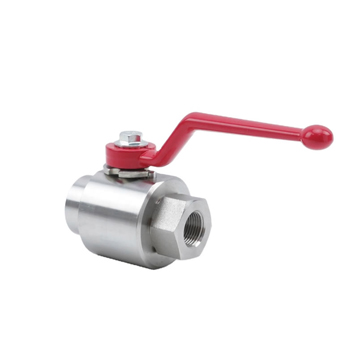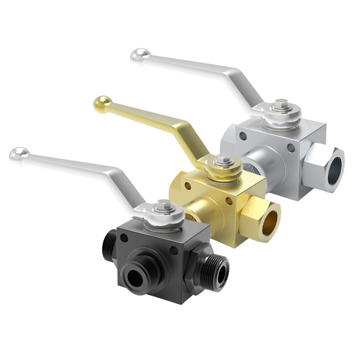How Much Do You Know About Ball Valves?
As the name suggests, a floating ball valve is a structure with a ball that closes off a cross section of pipe and stops the flow of fluid. Now, the main feature of a floating ball valve is that the ball does not have a structure to support it, so it is suspended in the fluid and held in place by the valve seat.
Floating ball valve classification
a. One-piece floating ball valves
Integral ball valves and flanged gate valves belong to the same type of valve, the closing member being the main difference between them. Obviously, the integral ball valve uses a ball, which rotates around the centre line of the valve body, while the flanged gate valve is a way to open the gate by turning the handle to lift the blocking structure. Ball valves are mainly used in pipelines for cutting off, distributing and changing the direction of media flow. Also known as integral ball valve, is a new type of valve that has been widely used in recent years.
b. Two-piece floating ball valve
The two-piece floating ball valve is named after the two parts of the left and right valve bodies which are connected by threads, bolts or welding. This type of valve is suitable for different working conditions such as high temperature and high pressure.
c. Three-piece floating ball valve
A three-piece floating ball valve is a floating ball valve with a body consisting of three parts from left to right. These parts are usually a body and two bonnets. Similar to the case of the two-piece floating ball valve, the end caps are usually threaded and bolted to the pipe by welding or flange connection.
Floating ball valve sealing principle
As the ball of the floating ball valve is not restricted by any component, when the valve is closed, the medium is pressurised from one end of the valve upstream) and the ball can produce a certain displacement, pressing firmly against the sealing surface of the valve body. The outlet end of the valve (downstream), thus forming an outlet seal.
Knowing which type of ball valve is best for your project is a skill that every worker in the oil and gas industry needs. The two most common types are floating ball valves and trunnion ball valves. Each valve has its own benefits, which is why it is important to understand how they differ.
Floating ball valves
The one component that separates the floating ball valve from the trunnion is the ball itself. The ball is suspended downstream due to the tight compression of the fixed seat. Because the ball is suspended, the worker can easily turn the valve 90 degrees to stop the flow of water or allow it to pass. However, if the upstream is strong, these valves are difficult to rotate because the pressure is too high, which is why these valves are ideal for low pressure projects.
Trunnion ball valves
Trunnion ball valves, on the other hand, have a fixed ball, while the seat can move slightly. The floating valve works with the downstream, while the trunnion valve works with the upstream. This makes trunnion valves one of the most versatile options for pipelines, as they can operate at lower torque. Trunnion ball valves are the most common valves due to their versatility and they can handle both low and high pressures.
So, which valve is right for your project? The general rule of thumb is that floating ball valves are best for low to medium pressure situations and trunnion ball valves are best for high pressure projects. However, trunnion valves are the most versatile, so they will work in most situations. In addition, if you need an automatic actuator, trunnion valves are best suited to automation.
For more information about the types of floating ball valve and their applications, welcome to contact us, please visit our website at https://www.longweicoupler.com. We will be happy to help you out!



评论
发表评论